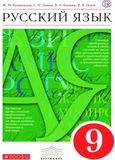Стр.63 Unit 7 ГДЗ Вербицкая Forward 9 класс
ЧТЕНИЕ И ЛЕКСИКА
1 Поработайте в парах. Опишите фотографию, затем ответьте на вопросы.
• Ведут ли мальчики этого возраста себя по-другому по отношению к девочкам? В каком смысле?
• Чем мужчины и женщины отличаются в своих увлечениях и интересах?
Решение #1
Аt the age of 2, boys tend to exhibit distinct behaviors compared to girls. Boys often show a preference for more active play, such as running and climbing, while girls may lean towards activities that involve communication and social interaction. These early differences are not absolute, as individual personalities play a significant role, but they provide a glimpse into how societal expectations may influence early behaviors.
Men and women often showcase variations in their hobbies and interests. Traditionally, men might lean towards activities associated with strength and competition, such as sports, while women may show a penchant for activities that involve creativity and social connection, such as arts or community engagement. However, it's essential to recognize that these are generalizations, and individuals can have diverse interests that may not align with societal norms.
В возрасте 2 лет мальчики часто проявляют различное поведение по сравнению с девочками. Мальчики часто проявляют предпочтение к более активным играм, таким как бег и лазанье, в то время как девочки могут быть склонны к занятиям, которые включают в себя общение и социальное взаимодействие. Эти ранние различия не являются абсолютными, поскольку индивидуальные личностные особенности играют значительную роль, но они дают представление о том, как социальные ожидания могут влиять на раннее поведение.
Мужчины и женщины часто проявляют разнообразие в своих увлечениях и интересах. Традиционно мужчины могут быть склонны к активностям, связанным с силой и соревнованием, таким как спорт, в то время как женщины могут проявлять интерес к занятиям, включающим творчество и социальное взаимодействие, таким как искусство или участие в сообществе. Однако важно осознавать, что это обобщения, и у индивидуалов могут быть разнообразные интересы, которые не всегда соответствуют общественным нормам.
Решение #2
ertainly, at the age of 2, boys tend to display distinct behaviors from girls. Boys may engage more in physically active play, such as running or climbing, while girls might show a preference for activities involving communication and social interaction. It's important to note that these are general trends, and individual differences play a significant role in shaping behavior.
Men and women often demonstrate differences in their hobbies and interests. Traditionally, men may gravitate towards pursuits associated with strength and competition, like sports, while women might lean towards activities emphasizing creativity and social connection, such as arts or community involvement. However, recognizing individual diversity is crucial, as people can have a wide range of interests that may not align with societal expectations.
Конечно, в возрасте 2 лет мальчики часто проявляют различное поведение по сравнению с девочками. Мальчики могут быть более активными в физических играх, таких как бег или лазанье, в то время как девочки могут проявлять предпочтение к занятиям, включающим общение и социальное взаимодействие. Важно отметить, что это общие тенденции, и индивидуальные различия играют значительную роль в формировании поведения.
Мужчины и женщины часто проявляют различия в своих увлечениях и интересах. Традиционно мужчины могут предпочитать занятия, связанные с силой и соревнованием, такие как спорт, в то время как женщины могут проявлять интерес к занятиям, акцентированным на творчестве и социальном взаимодействии, например, искусство или участие в общественной жизни. Важно признавать индивидуальное разнообразие, так как у людей может быть множество интересов, которые не всегда соответствуют общественным ожиданиям.
Решение #3
Possible answer: A group of five children are playing with toys. One girl is playing with a toy vacuum cleaner, holding the nozzle as she has obviously seen a real one held. It looks as if there is another girl sitting at the table and she is looking at a doll with one of the boys. The other boys are playing with a toy ‘digger’ and what appear to be building bricks.
(Возможный ответ: Группа из пяти детей играет с игрушками. Одна девочка играет с игрушечным пылесосом и держит насадку так, как она, очевидно, видела держат у настоящего. Похоже, за столом сидит еще одна девочка и она смотрит на куклу вместе с одним из мальчиков. Другие мальчики играют с игрушечным экскаватором и чем-то похожим на строительные кирпичи.)
2 Прочтите статью, прослушав ее запись, и ответьте на вопросы.
1 Сколько существует типов мозга?
2 Зависит ли тип вашего мозга от вашего пола?
3 Существует ли тип мозга, который лучше других?
Решение #
1. Three types (E, S and B)
(Три типа (E, S и B)
2. Not exactly. It depends on the amount of male or female hormones in the mother’s body before a child’s birth. Not all men have a male brain, and not all women have the female brain.
(Не совсем так. Это зависит от количества мужских или женских гормонов в организме матери до рождения ребенка. Не у всех мужчин мужской мозг, и не у всех женщин женский мозг.)
3. No. Both sexes have their strengths and their weaknesses.
(Нет. У обоих полов есть свои сильные и слабые стороны.)
3 Прочтите статью еще раз. Являются ли эти утверждения правдой или ложью?
1 В общем, и женщины, и мужчины предпочитают читать о людях, а не о гаджетах или оборудовании.
2 Эксперты раньше считали, что родители оказывают большое влияние на то, какие хобби нравятся их детям.
3 Даже в младенчестве, девочки, кажется, больше интересуются людьми, чем мальчики.
4 Кажется, маленьким девочкам легче ладить с людьми, чем мальчикам.
5 Люди с типом мозга S легко теряются.
6 Для женщин крайне необычно иметь мозг типа В.
Решение #
1. F (ложь)
2. Т (правда)
3. Т (правда)
4. Т (правда)
5. F (ложь)
6. F (ложь)
4 Сопоставьте эти прилагательные из статьи с определениями 1-6.
чуткий (абзац 2)
утешающий (абзац 2)
эгоистичный (абзац 2)
агрессивный (абзац 2)
сбалансированный (абзац 3)
терпимый (абзац 5)
1 позволять людям делать то, что они хотят, особенно когда вы с этим не согласны
2 показывать, что вы понимаете и не остаетесь равнодушными к чьим-то проблемам
3 вести себя жестоко и злобно по отношению к людям
4 иметь не слишком много чего-нибудь
5 заставить кого-то чувствовать себя лучше, когда он встревожен
6 заботиться только о себе, а не о других людях
Решение #
1. tolerant (терпимый)
2. sympathetic (чуткий)
3. aggressive (агрессивный)
4. balanced (сбалансированный)
5. comforting (утешающий)
6. selfish (эгоистичный)
5 Пройдите личностный тест. Затем посмотрите на страницу 118, чтобы узнать, о чем говорят ваши ответы. Вы согласны?
Насколько рационально вы мыслите?
Выберите шесть предложений, которым вы больше всего соответствуете.
1 Я не люблю слушать сплетни.
2 Мне нравится коллекционировать вещи (например, компакт-диски, журналы, номера самолетов).
3 Мне нравится знакомиться с другими людьми.
4 Мне нравится выяснять, как что-то работает, или что-то чинить.
5 Я люблю читать о любых из этих вещей – военной истории, науке, Вселенной, руководствах по эксплуатации, компьютерах.
6 Я иногда допускаю оплошность в общении с людьми.
7 Мне кажется, я часто знаю, о чем думают другие люди.
8 Я обычно доверяю своей интуиции или первому впечатлению, когда знакомлюсь с людьми.
9 Я волнуюсь, когда у кого-то из моих друзей возникают проблемы.
10 Я безнадежен в том, что касается выполнения нескольких дел одновременно.
11 Мне нравится быть хозяином/хозяйкой, например, организовывать вечеринку.
12 Мне легко читать карты.
13 Для меня важно иметь близких друзей.
14 Мне довольно легко «вписаться» в новую ситуацию или к новым людям.
15 Литература – один из моих самых сильных предметов.
16 Математика – один из моих самых сильных предметов.
Решение #
2, 3, 5, 7, 8, 9, 12, 13, 14, 16
I have brain type B (balanced), because my answers are about equally of type S and E.
(У меня тип мозга В (сбалансированный), т.к. у меня ответы примерно поровну от типа S и E.)
Приведем выдержку из задания из учебника Вербицкая, Маккинли, Хастингс 9 класс, Вентана-Граф:
READING AND VOCABULARY
1 Work in pairs. Describe the photo, then answer the questions.
• Do boys of this age behave differently to girls? In what ways?
• In which ways do men and women differ in their hobbies and interests?
2 Read the article, listening to its recording, and answer the questions.
1 How many types of brain are there?
2 Does the type of brain you have depend on your gender?
3 Is there a type of brain which is better than the others?
Текст аудирования:
Like Father, Like Son? Perhaps Not ...
A new report suggests that our brain chemistry at birth is as important as our upbringing.
Go into a busy newsagent’s and have a look at what kind of things people are reading. The chances are that the women are reading about fashion, beauty, romance or relationships and the men are reading about cars, photography, equipment or sport. This ought not to be a surprise. After all, these choices are also seen in typical male and female hobbies — men generally enjoy things such as looking after their cars, buying new parts for their stereos, bird-watching or playing computer games, while women seem to prefer keeping in touch with friends and entertaining.
For a long time, experts thought that these differences between male and female interests depended on how parents brought up their children and indeed society in general. However, when we look at young babies, we see that boys and girls have interests which we can call typically ‘male’ or ‘female’ from a very early age. A baby girl, as young as 12 months old, is sympathetic when she sees a sad or worried face — she also looks sad and makes comforting sounds. Baby girls also make more eye contact and look longer at other people. Boys of the same age look longer at mechanical objects — toys that spin, light up or move. Later, when they become toddlers, boys usually enjoy putting things together and building towns or bridges or vehicles. Boys are often more selfish and aggressive when they play with other children while girls are better at joining in with others. Just like the adults.
So where do these differences between male and female behavior come from? Although it is true that culture and upbringing play an important role, many scientists now believe that the answer also lies in the amount of male and female hormones in the mother’s body before a child’s birth. Research has shown that this balance of hormones leads to three different
types of brain: type E, type S and type B. People who are born with a type S or male brain are generally interested in systems: constructing and organizing things and working out how things work. They tend to be good at working out where they are, from maps, making things from plans or collecting things. Others have a type E or female brain, which means they are good at understanding other people’s emotions and treating people with care because they are sensitive themselves. Others are born with characteristics of both these male and female brains — this is called the type B or balanced brain.
Perhaps the most crucial thing that the researchers found out was that the type of brain you have does not have to depend on your sex. Not all men have the male brain, and not all women have the female brain. But on average, more males than females have a type S brain, and more females than males have a type E brain.
So does this mean that one sort of brain is superior? No, not at all. Some people find some things easier to do than others, but both sexes have their strengths and their weaknesses. Researchers hope that understanding how people are born with different types of brain can help make all of us more tolerant of difference.
3 Read the article again. Are the statements true or false?
1 Generally speaking, women and men both prefer reading about people than reading about, gadgets or equipment.
2 Experts used to believe that parents had a lot of influence on what hobbies their children liked.
3 Even when they are babies, girls seem more interested in people than boys.
4 It seems to be easier for little girls to get on with people than for boys.
5 People with a type S brain get lost easily.
6 It is extremely unusual for women to have a type В brain.
4 Match these adjectives from the article with definitions 1-6.
sympathetic (para. 2)
comforting (para. 2)
selfish (para. 2)
aggressive (para. 2)
balanced (para. 3)
tolerant (para. 6)
1 allowing people to do what they want, especially when you do not agree with it
2 showing that you understand and care about someone’s problems
3 behaving in a violent and angry way towards people
4 having not too much of any one tiling
5 making someone feel better when they are anxious
6 caring only about yourself and not other people
5 Try the personality test. Then look at page 118 to find out what your answers suggest. Do you agree?
How balanced is your brain?
Choose six sentences which you can identify with the most
1 I dislike listening to gossip.
2 I enjoy collecting things (e.g. CDs, magazines, aircraft numbers).
3 I enjoy getting to know' other people.
4 I like finding out how something works or fixing things.
5 I love reading about any of these things - military history, science, the universe, instruction manuals, computers.
6 I sometimes make a faux pas when with people.
7 I think I often know what other people are thinking.
8 I usually trust my intuition or first impressions when I meet people.
9 I worry when one of my friends is having problems.
10 I'm hopeless at doing several things at once.
11 I enjoy being a host/hostess - for example organizing a party.
12 It’s easy for me to read maps.
13 It’s important for me to leave close friends.
14 It’s quite easy for me to ‘fit in’ in a new situation or with new people.
15 Literature is one of my strongest subjects.
16 Maths is one of my strongest subjects.
*размещая тексты в комментариях ниже, вы автоматически соглашаетесь с пользовательским соглашением





